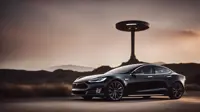Red Flag overshadows Star-Spangled Banner
06 Dec 2014
China is back to where it was for the most part of history, unseating the United States as the world's biggest economy nearly one-and-a-half century after it lost the claim to Britain in 1870 and later to the US in 1872.
 China enters 2015 as the world's biggest economy and is expected to remain there for a very long time in the absence of an economic tsunami.
China enters 2015 as the world's biggest economy and is expected to remain there for a very long time in the absence of an economic tsunami.
China's economic output will reach $17.6 trillion by the year-end whereas the US will slide down to second place with a GDP of $17.4 trillion, according the International Monetary Fund.
According to IMF's calculations based on purchasing power parity, China now account for 16.5 per cent of the world's economy while the US holding is down at 16.3 per cent.
With prices of similar goods being similar in Shanghai and New York on PPP terms, the shift in economic power is phenomenal.
China's growth is also unparalleled considering the fact that just over a decade ago, in 2000, the US claimed to have produced three-times as much as the Chinese, according to MarketWatch.
The Chinese economy was one-tenth the size of the US in 1980, according to the Financial Times.
While, it was a foregone conclusion that at some point China's economy would definitely surpass that of the US, what has alarmed the US and most other advanced economies is the fact China is able to keep up the growth momentum while the US and other western economies are struggling to keep growth alive.
Moreover, China has more than four times as many people as the US does and this should stand in good stead for the Asian power house.
As Joseph E Stiglitz wrote in the Vanity Fair, ''With savings and investment making up close to 50 per cent of GDP, the Chinese worry about having too much savings, just as Americans worry about having too little.''
The US, according to Stiglitz, still has an edge as a ''soft power' over China or any other nation for that matter. China still trails America in the number of patents awarded, although it is closing the gap while in manufacturing the Chinese overtook the US only within the past several years.
Also, as Stiglitz pointed out, the rise of China also points to the failure of the American system to deliver growth. In the US, the middle class family is worse off than it was a quarter-century ago, adjusted for inflation; the proportion of people in poverty has increased.
China, on the other hand, has been doing some good for most of its citizens. China moved some 500 million people out of poverty during the same period that saw America's middle class enter a period of stagnation.
The United States seems to have actually gained nothing both from its expansionary monetary policy and the new global trade order under the World Trade Organisation.
While the lose money policy created problems for emerging economies, trade rules seem to have helped emerging and Third World economies, at the cost of the US and other OECD economies.
US trade deficit, which narrowed slightly in October, stood at $43.4 billion while China saw its trade surplus expand to $45.41 billion in October.
China's position as the No 1 economy will have its costs as well as it would have to pay more to support international bodies such as the United Nations. It could also claim to greater say in the global financial institutions like the IMF and the World Bank. But, for that, there should be an overhaul of these multilateral lending agencies.
Obviously, the US economic model doesn't serve a majority of its citizens and is unlikely to be emulated by developing economies and it cannot force its rules on other countries now.



.webp)
.webp)

.webp)
.webp)

























